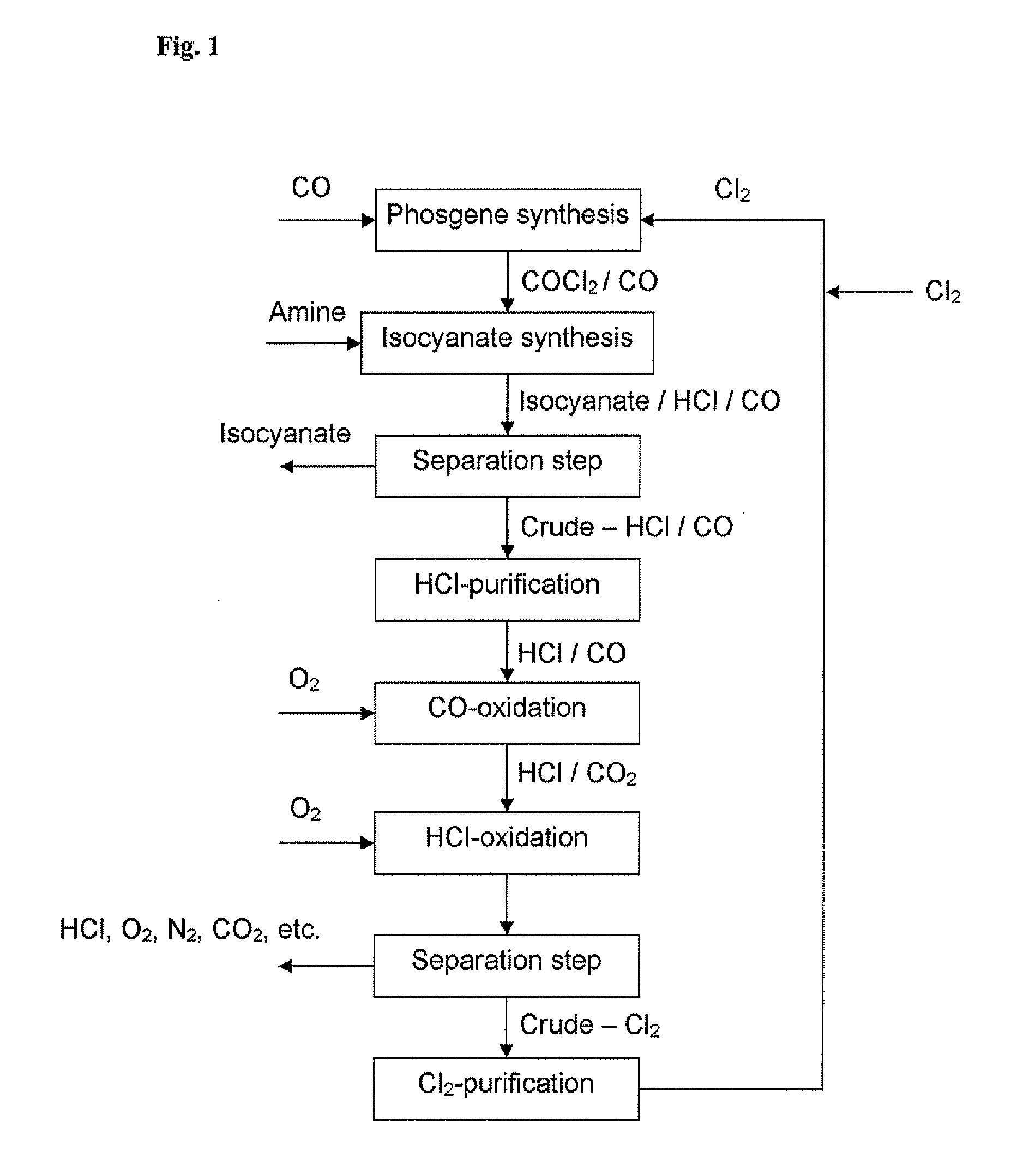Processes for the oxidation of carbon monoxide in a gas stream containing hcl
a technology of carbon monoxide and gas stream, which is applied in the direction of chlorine/hydrogen chloride, inorganic chemistry, halogen/halogen-acids, etc., can solve the problems of low activity of catalysts in hcl oxidation, energy- and therefore cost-intensive preparation methods, and inability to us
- Summary
- Abstract
- Description
- Claims
- Application Information
AI Technical Summary
Benefits of technology
Problems solved by technology
Method used
Image
Examples
examples
[0048]10 g ruthenium chloride n-hydrate are dissolved in 34 ml water, 200 g support (SnO2 / Al2O3 (85:15 w / w); 1.5 mm) are added and the components are mixed thoroughly until the solution has been absorbed by the support. The support impregnated in this way is left to stand for 1 h. The moist solid is finally dried in the unwashed form in a muffle oven for 4 h at 60° C. and 16 h at 250° C.
[0049]5 g of the dried catalyst were employed at various temperatures and gas streams. The amount of carbon monoxide and carbon dioxide in the intake stream and in the exit stream was determined by gas chromatography by known methods. Table 1 contains the experiment conditions and the resulting CO conversion to CO2.
TABLE 1Temp. ° C.N2 l / hO2 l / hHCl l / hCO l / hConversion %2503.60.251.10.2551%350252050.2590%
PUM
| Property | Measurement | Unit |
|---|---|---|
| Temperature | aaaaa | aaaaa |
| Temperature | aaaaa | aaaaa |
Abstract
Description
Claims
Application Information
 Login to View More
Login to View More - R&D
- Intellectual Property
- Life Sciences
- Materials
- Tech Scout
- Unparalleled Data Quality
- Higher Quality Content
- 60% Fewer Hallucinations
Browse by: Latest US Patents, China's latest patents, Technical Efficacy Thesaurus, Application Domain, Technology Topic, Popular Technical Reports.
© 2025 PatSnap. All rights reserved.Legal|Privacy policy|Modern Slavery Act Transparency Statement|Sitemap|About US| Contact US: help@patsnap.com


